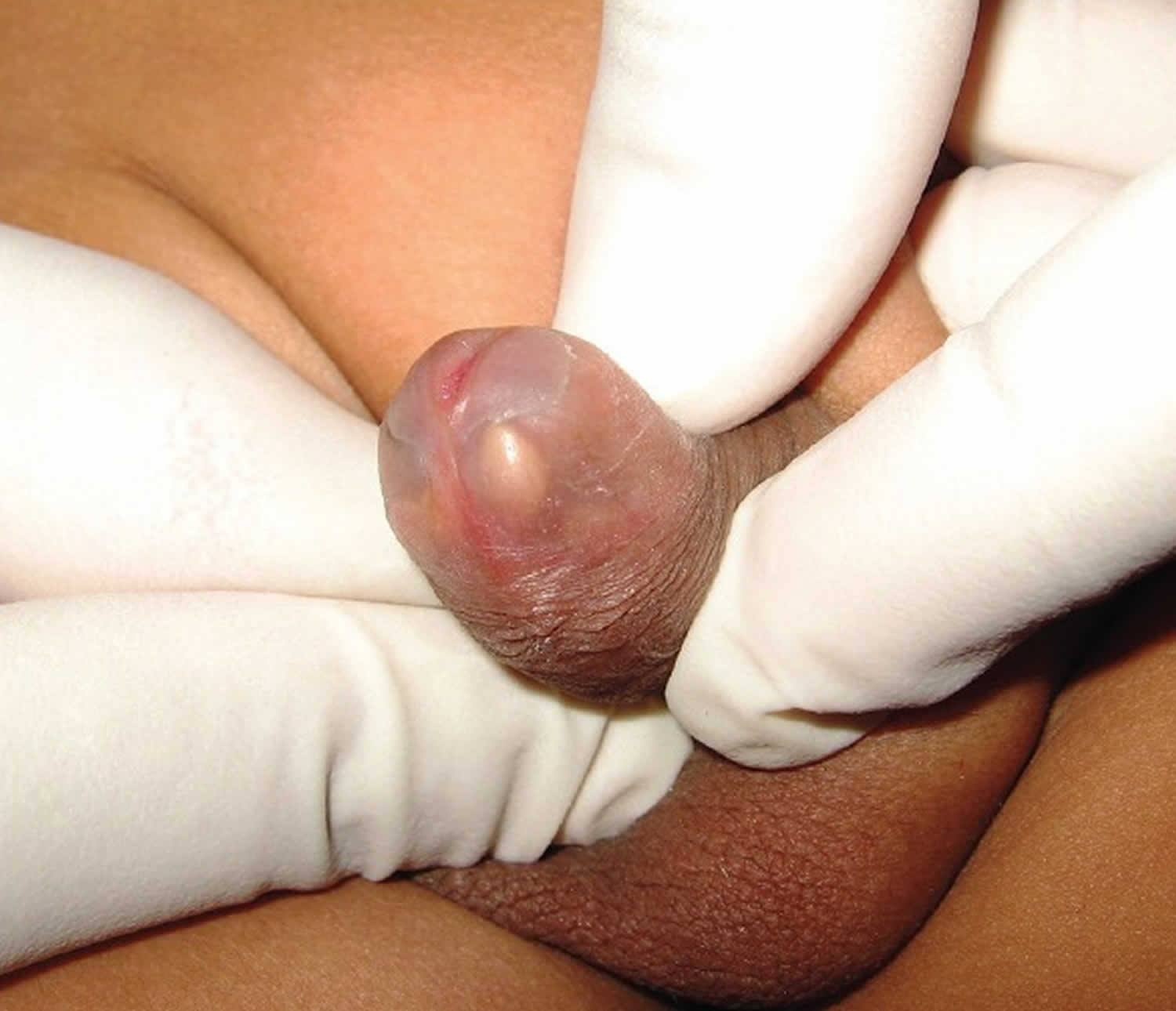What is smegma
Smegma is dead skin cells and the sebum (oily secretions) produced by the sebaceous glands of both male (and female genitalia) that can build up underneath the foreskin which appear as whitish substance, which can be mistaken for a cyst or pus under the foreskin, but smegma is not an infection and does not require antibiotics. Under normal circumstances, smegma aids in the lubricating movement of the foreskin; without it friction and irritation results 1. Smegma might even cause firm lumps under the foreskin. This happens in about 10% of older boys, and it’s also normal. Young boys can wash smegma away with water, but it can also be left for years without problems. By puberty, regular showering will clean smegma away.
In the first several years your son’s foreskin will separate from the tip of the penis. Some foreskins separate soon after birth or even before birth, but this is rare. When it happens is different for every child. It may take a few weeks, months, or years. Once this happens, the foreskin can be pulled back away from the tip of the penis. This is called foreskin retraction.
Most uncircumcised baby boys have a foreskin that won’t pull back (retract) because it’s still attached to the glans. This is perfectly normal for about the first 2 to 6 years. By around the age of 2, the foreskin should start to separate naturally from the glans. The foreskin of some boys can take longer to separate, but this doesn’t mean there’s a problem – it’ll just detach at a later stage.
Never try to force your child’s foreskin back before it’s ready because it may be painful and damage the foreskin.
If the foreskin becomes red, inflamed or painful, or if the hole (meatus) where the urine comes from is narrowing and your child’s foreskin “balloons” when he urinates, notify your child’s doctor.
Cleaning
If your son’s foreskin separates before he reaches puberty, an occasional retraction with cleansing beneath will do. Once your son starts puberty, he should clean beneath his foreskin as part of his daily routine, just like washing his hair and brushing his teeth.
Teach your son to clean his foreskin in the following way:
- Step 1: Gently pull the foreskin back away from the end of the penis.
- Step 2: Rinse underneath the foreskin with soap and warm water.
- Step 3: Pull the foreskin back over the penis
Figure 1. Smegma
Figure 2. Smegma pearl
Is smegma bad?
No. Smegma is normal and nothing to worry about. Smegma consists of dead skin cells that accumulate underneath the foreskin and help to break them apart.
What causes smegma
Smegma is dead skin cells that can build up underneath the foreskin. The penis, the outer reproductive organ of the male, consists of two parts — the shaft and the head (called the glans). All boys are born with a foreskin, a layer of skin that covers the shaft and the glans. Some boys are circumcised, and the skin covering the glans is removed. Other boys are not circumcised, leaving skin that covers the tip of the penis.
In an uncircumcised boy, the foreskin will gradually begin to separate from the glans of the penis. As this occurs you may notice a white, cheesy material called smegma (consisting of skin cells that are shed throughout life) release between the layers of skin. You also may see white “pearls” or “smegma pearl” (Figure 2) develop under the fused layers of the foreskin and the glans. These are not signs of an infection or a cyst.
When the foreskin separates from the glans of the penis it can be pulled back (retracted) to expose the glans. Foreskin retraction may happen immediately after birth, or it may take several years. Some boys can retract their foreskin as early as age 5, but most may not be able to do this until their teenage years.
Retraction of the foreskin should not be forced. This may cause pain and bleeding and can lead to scarring and adhesions (where skin is stuck to skin).
As your son begins to toilet train, teach him how to retract his foreskin, this will get him used to this necessary step during urination. Eventually, the foreskin should be retracted far enough during urination to see the meatus (the hole where the urine comes from). This prevents urine from building up beneath the foreskin and possibly causing an infection.
As long as the foreskin doesn’t easily retract, only the outside needs to be cleaned. If the foreskin retracts a little, just clean the exposed area of the glans with water. Don’t use soap on this area, as it can irritate the skin. After cleaning, always gently pull the foreskin back over the glans of the penis.
As your child gets older and the foreskin has completely separated and retracts easily, begin to teach him to clean underneath it as he bathes. At puberty, your son should be taught the importance of cleaning beneath the foreskin as part of his daily hygiene routine.
How to clean smegma
It’s important to clean your penis regularly to avoid problems developing.
You should:
- gently wash your penis with warm water each day while having a bath or shower
- gently pull back your foreskin (if you have one) and wash underneath; don’t pull back the foreskin of a baby or young boy because it could be painful and cause harm
- use a mild or non-perfumed soap (if you choose to use soap) to reduce the risk of skin irritation
- avoid using talc and deodorants on your penis as they may cause irritation
Circumcised men should also regularly clean their penis with warm water and a mild soap (if you choose to use soap).
- Wray AA, Khetarpal S. Balanitis. [Updated 2019 Jan 10]. In: StatPearls [Internet]. Treasure Island (FL): StatPearls Publishing; 2018 Jan-. Available from: https://www.ncbi.nlm.nih.gov/books/NBK537143[↩]






